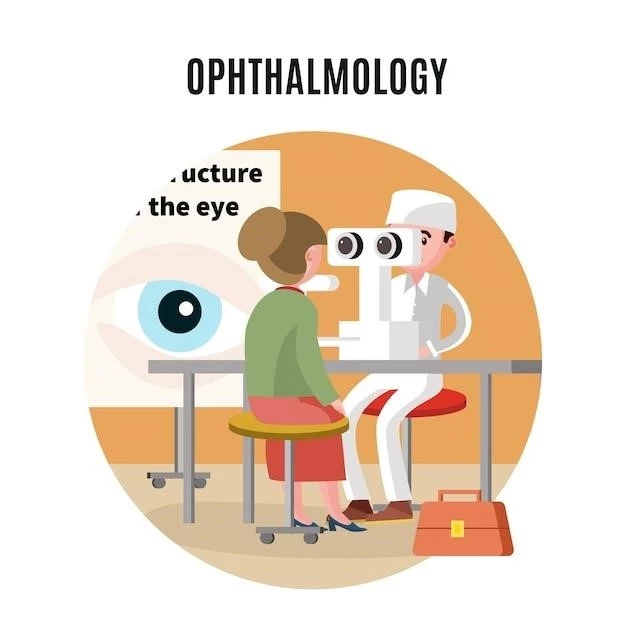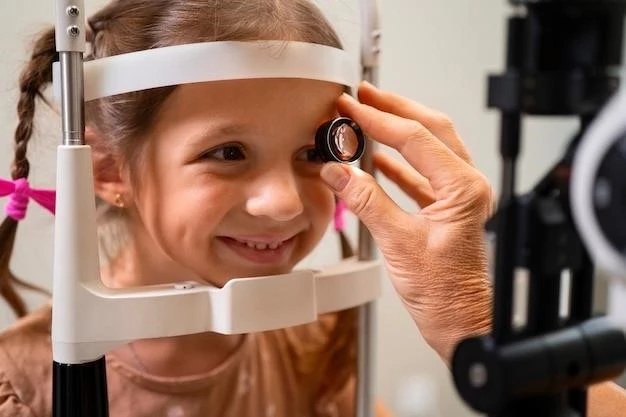Understanding Gyrate Atrophy of the Retina
Seeking insights into the disease Gyrate Atrophy of the Retina is crucial to managing its impact and progression effectively. This article aims to provide a comprehensive guide to help individuals navigate the complexities of this condition.
Introduction to Gyrate Atrophy
Gyrate Atrophy of the Retina is a rare inherited eye disease characterized by progressive vision loss. This condition is caused by a genetic mutation affecting the metabolism of amino acids, particularly ornithine. The mutation results in a deficiency of the enzyme ornithine aminotransferase, leading to a buildup of ornithine in the body.
The retina’s retinal pigment epithelium (RPE) plays a vital role in supporting the photoreceptor cells essential for vision. In Gyrate Atrophy, the accumulation of ornithine damages the RPE, disrupting its function and ultimately causing retinal degeneration.
Individuals with Gyrate Atrophy may also experience chorioretinal atrophy, where the layers of the retina and choroid thin out, impacting central vision. Macular degeneration, a common complication, can further exacerbate vision loss.
Understanding the underlying mechanisms of Gyrate Atrophy is crucial for early diagnosis and intervention. Stay informed about the symptoms, causes, and treatment options to manage this condition effectively.
Causes of Gyrate Atrophy
Gyrate Atrophy of the Retina is primarily caused by genetic mutations that affect the metabolism of amino acids, specifically ornithine. This genetic mutation leads to a deficiency in the enzyme ornithine aminotransferase, which is essential for metabolizing ornithine.
Ornithine is an amino acid involved in various physiological processes, and its accumulation due to the mutation can be toxic to the retinal pigment epithelium (RPE). The RPE plays a critical role in supporting the health and function of the retina, making its impairment a significant factor in the development of Gyrate Atrophy.
Understanding the genetic basis of Gyrate Atrophy is essential for diagnosis and genetic counseling. By recognizing the role of genetic mutations in this condition, healthcare providers can better tailor treatment plans and interventions to address the specific needs of individuals with Gyrate Atrophy.

Role of Retinal Pigment Epithelium (RPE)
The retinal pigment epithelium (RPE) is a crucial layer of cells located at the back of the eye, between the retina and the underlying choroid. Its primary function is to provide support to the photoreceptor cells in the retina, help maintain the health of the retina, and facilitate the visual process.
In the context of Gyrate Atrophy of the Retina, the RPE plays a significant role in the progression of the disease. The build-up of ornithine due to genetic mutations can cause toxicity to the RPE, leading to its dysfunction and subsequent damage to the surrounding retinal tissue. This disruption in RPE function contributes to the retinal degeneration observed in individuals with Gyrate Atrophy.
Understanding the critical role of the RPE in maintaining retinal health underscores the importance of preserving its function in managing Gyrate Atrophy. By focusing on strategies to support RPE function and mitigate the impact of ornithine accumulation, healthcare providers can aim to slow the progression of vision loss associated with this condition.
Amino Acid Metabolism and Gyrate Atrophy
Amino acid metabolism plays a pivotal role in the development of Gyrate Atrophy of the Retina. Specifically, the genetic mutation affecting the metabolism of ornithine, an amino acid, is central to the pathogenesis of this rare inherited eye disease.
The enzyme ornithine aminotransferase, responsible for the breakdown of ornithine, is deficient in individuals with Gyrate Atrophy. This results in the accumulation of ornithine in various tissues, including the retina, leading to the degeneration of retinal cells and progressive vision loss.
Monitoring amino acid levels, especially ornithine, can provide valuable insights into the metabolic aspects of Gyrate Atrophy. Understanding how amino acid metabolism influences the disease process can guide healthcare providers in designing personalized treatment approaches focused on addressing the metabolic imbalances associated with this condition.
Importance of Pyridoxine in Gyrate Atrophy
Pyridoxine, also known as vitamin B6, plays a significant role in the management of Gyrate Atrophy of the Retina. Studies have suggested that pyridoxine supplementation may help reduce the levels of ornithine in the body by enhancing the activity of alternative metabolic pathways.
By promoting the metabolism of ornithine through alternate pathways, pyridoxine supplementation can potentially alleviate the toxic effects of ornithine accumulation on the retinal pigment epithelium (RPE) and retinal cells. This can help slow down the progression of retinal degeneration and mitigate vision loss in individuals with Gyrate Atrophy.
Consulting with a healthcare provider knowledgeable about the role of pyridoxine in managing Gyrate Atrophy is essential to determine the appropriate dosage and treatment duration tailored to individual needs. Incorporating pyridoxine supplementation as part of a comprehensive treatment plan may offer potential benefits in preserving vision and maintaining retinal health.
Symptoms and Diagnosis of Gyrate Atrophy
Gyrate Atrophy of the Retina presents with various symptoms that individuals should be mindful of. These include night blindness, tunnel vision, decreased peripheral vision, and gradual loss of central vision. If you experience any of these visual impairments, seek prompt evaluation from an eye care specialist.
Diagnosing Gyrate Atrophy typically involves a comprehensive eye examination, including visual acuity tests, visual field testing, and imaging studies such as optical coherence tomography (OCT) to assess retinal structure. Additionally, genetic testing may be recommended to confirm the presence of the genetic mutation associated with this condition.
Early detection of Gyrate Atrophy is crucial for initiating timely interventions to help preserve vision and slow the progression of retinal degeneration. If you notice any changes in your vision or have a family history of eye diseases, schedule an appointment with an ophthalmologist for a thorough evaluation and personalized management plan.
Treatment Options for Gyrate Atrophy
The treatment of Gyrate Atrophy of the Retina focuses on managing symptoms, preserving vision, and slowing disease progression. Standard approaches may include dietary modifications to restrict ornithine intake and supplementation with pyridoxine (vitamin B6) to aid in ornithine metabolism.
Regular monitoring of retinal health through comprehensive eye examinations is essential to track disease progression and adjust treatment strategies accordingly. In some cases, surgical interventions or advanced therapies such as gene therapy may be considered to address specific aspects of the condition.
Collaborating with a multidisciplinary team of healthcare professionals, including ophthalmologists, genetic counselors, and nutritionists, can help individuals with Gyrate Atrophy navigate treatment options effectively. Engage in open communication with your healthcare team to tailor a holistic treatment plan that addresses your unique needs and optimizes visual outcomes.
Complications of Gyrate Atrophy⁚ Chorioretinal Atrophy
Chorioretinal atrophy is a significant complication of Gyrate Atrophy of the Retina that individuals should be aware of. This condition involves the progressive thinning and degeneration of the layers of the retina and the underlying choroid, impacting central vision and visual acuity.
The development of chorioretinal atrophy in Gyrate Atrophy patients can further exacerbate vision loss and may complicate the management of the underlying retinal degeneration. Regular monitoring of retinal changes and early intervention are crucial in addressing the potential impact of chorioretinal atrophy on visual function.
Work closely with your healthcare team to monitor any signs of chorioretinal atrophy and adjust treatment plans as needed. By staying proactive in managing complications like chorioretinal atrophy, individuals with Gyrate Atrophy can better preserve their remaining vision and maintain overall eye health.
Lifestyle Recommendations for Individuals with Gyrate Atrophy
Adopting healthy lifestyle habits can complement medical treatment and support overall eye health in individuals with Gyrate Atrophy of the Retina. Consider incorporating the following recommendations into your daily routine⁚
- Eat a balanced diet rich in nutrients that promote eye health, such as leafy greens, colorful fruits, and omega-3 fatty acids.
- Maintain a healthy weight and engage in regular physical activity to support cardiovascular health and overall well-being.
- Avoid smoking and limit alcohol consumption, as these habits can negatively impact eye health and exacerbate retinal degeneration.
- Protect your eyes from harmful UV rays by wearing sunglasses outdoors and using protective eyewear during activities that pose a risk of eye injury;
- Stay informed about advancements in the management of Gyrate Atrophy and engage in regular follow-ups with your healthcare team for ongoing care and support.
By incorporating these lifestyle recommendations into your daily life, you can help optimize your eye health, enhance treatment outcomes, and maintain the quality of your vision over time. Consult with your healthcare provider for personalized advice tailored to your specific needs and circumstances.
Research Advances and Hope for Gyrate Atrophy Patients
Ongoing research in the field of Gyrate Atrophy of the Retina offers promising insights and hope for individuals affected by this rare inherited eye disease. Scientists and healthcare professionals are exploring innovative treatment approaches, including gene therapy and targeted medications, to address the underlying genetic mutations and metabolic imbalances associated with Gyrate Atrophy.
Clinical trials focusing on novel therapies and advancements in gene editing technologies provide a glimmer of hope for improved outcomes and potential cures in the future. By participating in research studies and staying informed about the latest developments, patients with Gyrate Atrophy can play an active role in shaping the future of treatment options and disease management strategies.
Engage with your healthcare team to discuss participation in clinical trials, research initiatives, and collaborative efforts aimed at advancing the understanding and treatment of Gyrate Atrophy. Stay optimistic, stay informed, and embrace the potential for groundbreaking discoveries that may transform the outlook for individuals living with this challenging eye disease.
